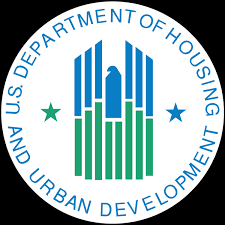 Legislation signed into law on December 27, 2020, fixed the rate for the 30% present value low-income housing tax credit (LIHTC), which had dropped to a historic low of 3.07 in 2020, at 4% (the 4% Floor). Congress hopes that the 4% Floor will increase the supply of affordable rental housing in 2021 and beyond by reducing the need for other types of financing and subsidies for qualified LIHTC projects.
Legislation signed into law on December 27, 2020, fixed the rate for the 30% present value low-income housing tax credit (LIHTC), which had dropped to a historic low of 3.07 in 2020, at 4% (the 4% Floor). Congress hopes that the 4% Floor will increase the supply of affordable rental housing in 2021 and beyond by reducing the need for other types of financing and subsidies for qualified LIHTC projects.
The LIHTC program, which was enacted as part of the 1986 Tax Reform Act, subsidizes the acquisition, construction and rehabilitation of affordable rental housing for low- and moderate-income tenants. The program accounts for approximately 90% of all such housing created in the United States today. According to HUD, an average of almost 1,400 projects and 106,000 units were completed annually between 1995 and 2018. The LIHTC program is by far the largest federal program supporting the creation of affordable rental housing.
The 1986 legislation specified that the IRS would periodically reset the LIHTC percentages based on the applicable federal interest rates to maintain the present value of the 10-year tax credit stream at either 70% or 30% of the qualified basis of the rental building. The 70% present value LIHTC is allocated by the states to private developers, through a competitive process, for new construction and substantial rehabilitation of buildings without federal subsidies. The 30% present value LIHTC is available for acquisition of existing buildings and for new construction and substantial rehabilitation of buildings financed by private activity tax-exempt bonds (approved by the states). Developers typically sell LIHTCs to corporate investors, as a dollar-for-dollar tax incentive, to partially fund the development of affordable housing projects. After a project is made available to tenants, the investor(s) can claim the LIHTC over a 10-year period. However, during the financial crisis in 2008, Congress decided that the minimum rate for the 70% present value LIHTC should be 9%, regardless of prevailing interest rates. Housing advocates have long requested a similar floor for the 30% present value LIHTC to help provide predictability to the marketplace and to make more projects financially feasible.
The additional equity resulting from the 4% Floor may also prevent an unintended reallocation of tax benefits when an investor’s capital account goes negative, which is more likely when tax-exempt bond financing is used. In addition, it might allow for the claiming of bonus depreciation on projects that could not previously support the accelerated losses. One caveat, however, is that state allocation agencies and government lenders could consider the additional equity in determining the financial feasibility of a project and reduce the amount of permitted financing from other sources.
To qualify for the 4% Floor under the new law, buildings must be placed in service after December 31, 2020 and either: (1) receive a LIHTC allocation after December 31, 2020 or (2) be financed by a tax-exempt bond “issued” after December 31, 2020 that is subject to the applicable volume cap. However, it is not clear whether the 4% Floor will apply to any 2020 LIHTC projects financed with tax-exempt bonds. Key questions to be determined include: (i) whether the bonds are deemed to be “issued” on the date that they were subject to the volume cap in 2020 or on the date that they are drawn in part after 2020; and (ii) whether an additional 2021 bond issuance will qualify a 2020 LIHTC project for the 4% Floor. Until guidance is provided to address these questions, it is prudent to assume that the 4% Floor does not apply retroactively.
For additional information, please contact Kimberly Moore, Josephine Lo, Emily Bias or James Grosser.
 Gravel2Gavel Construction & Real Estate Law Blog
Gravel2Gavel Construction & Real Estate Law Blog


